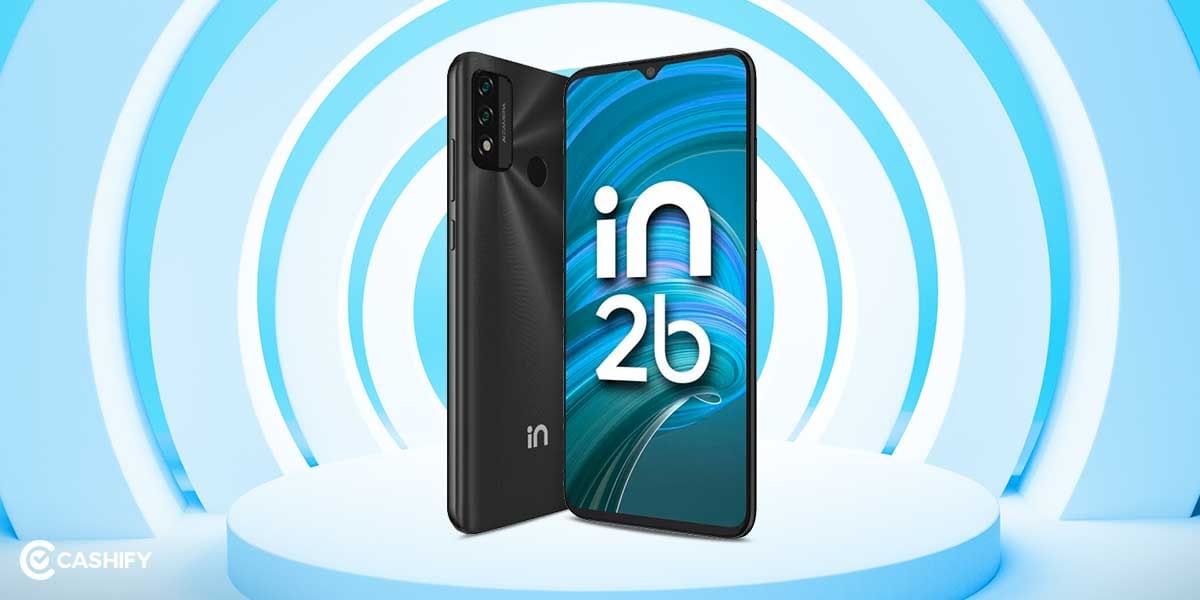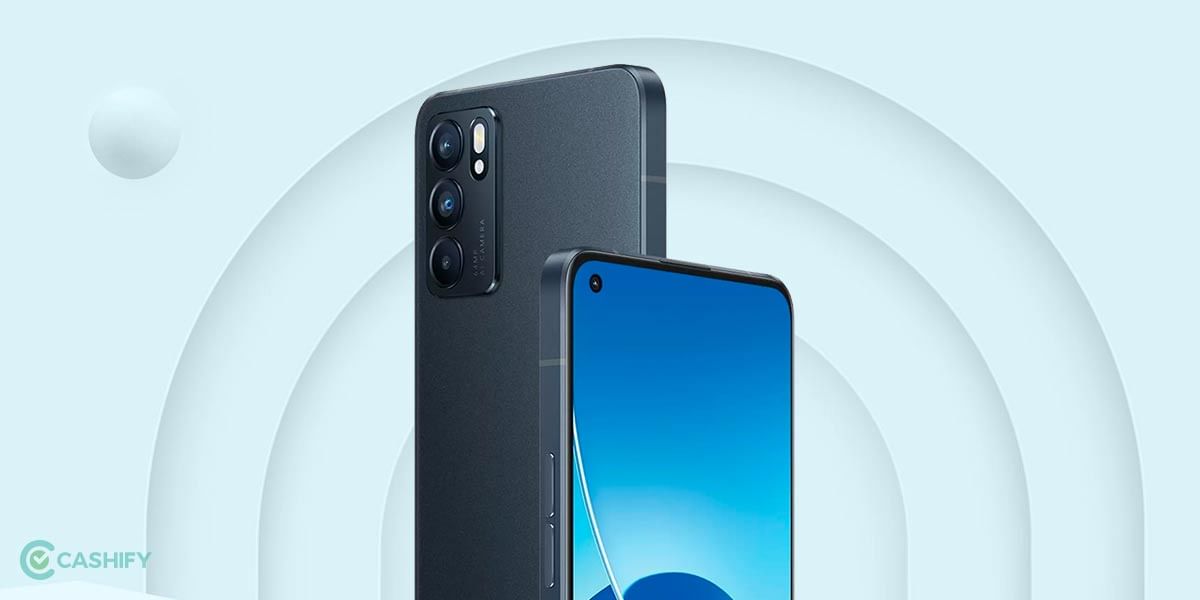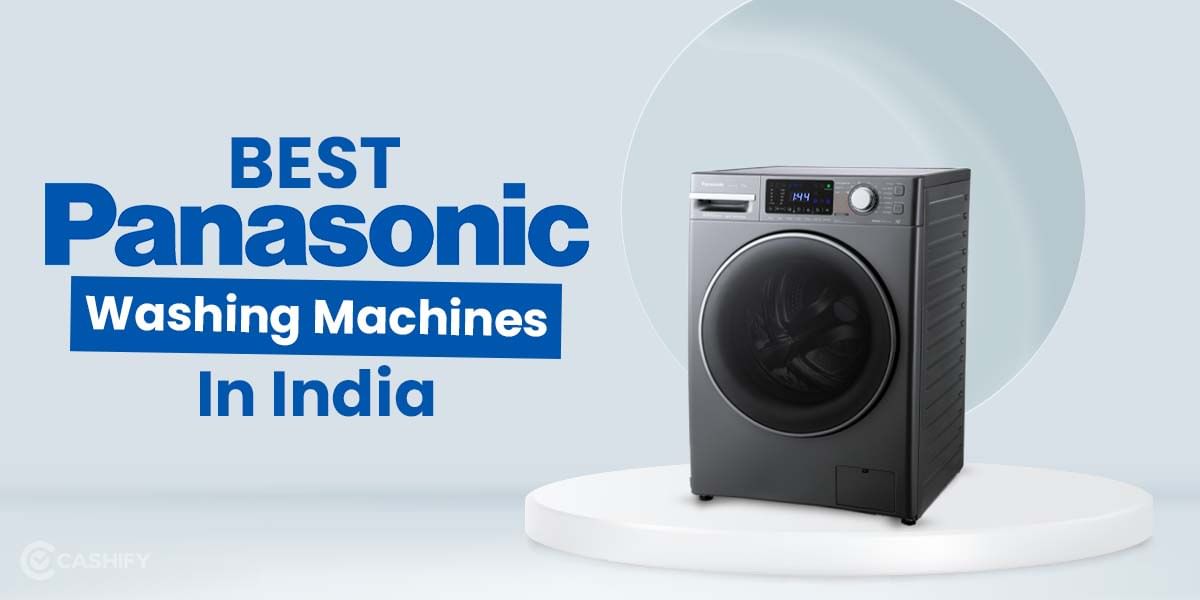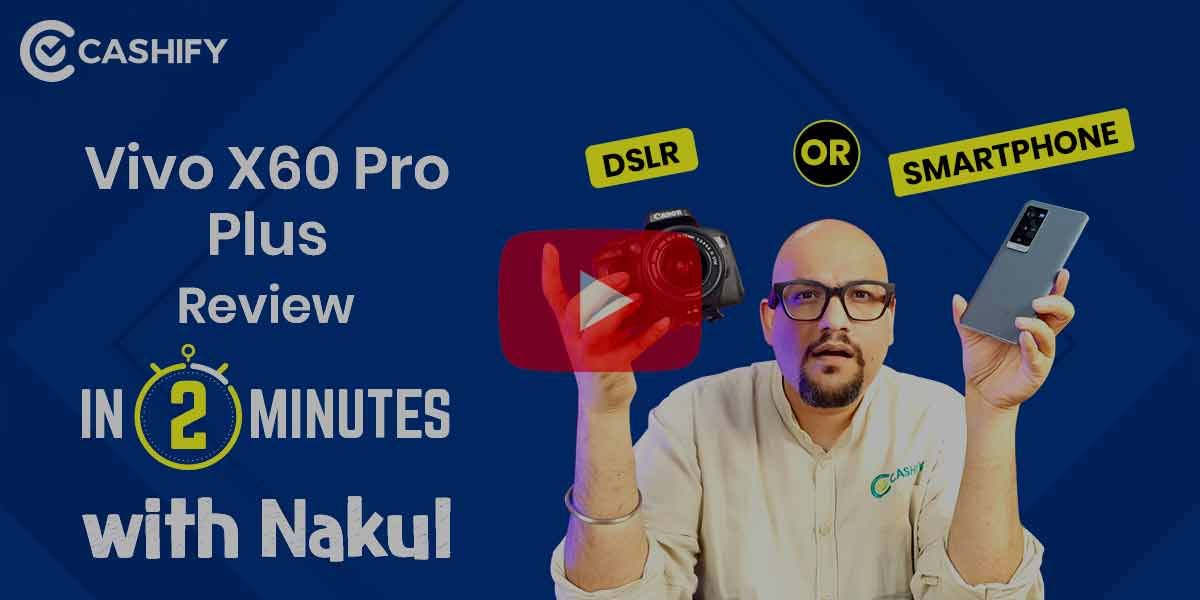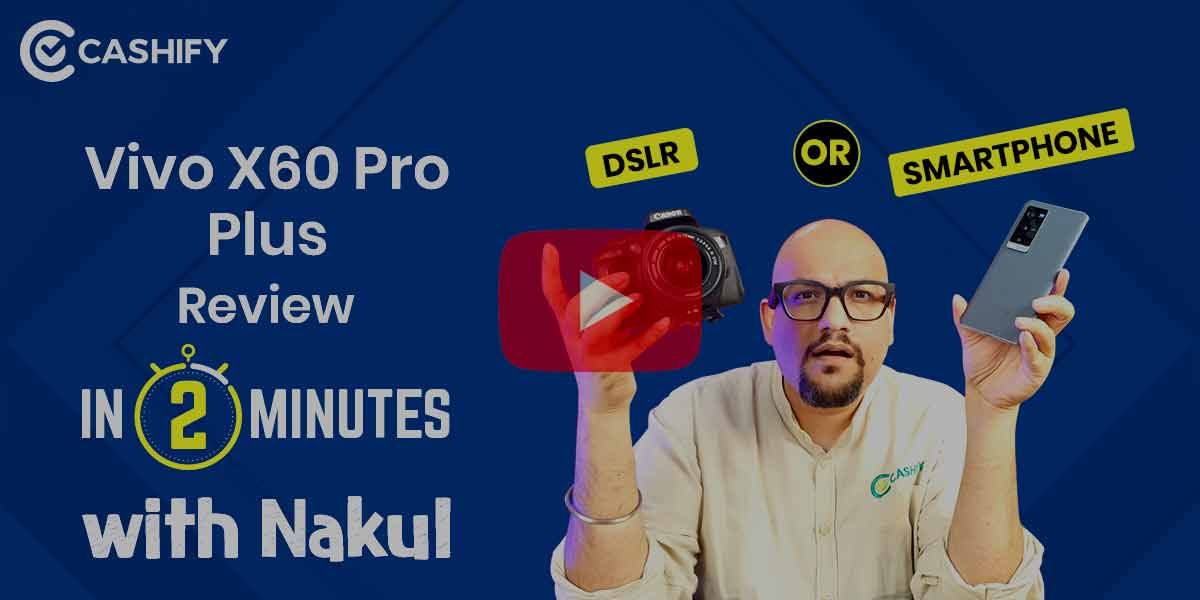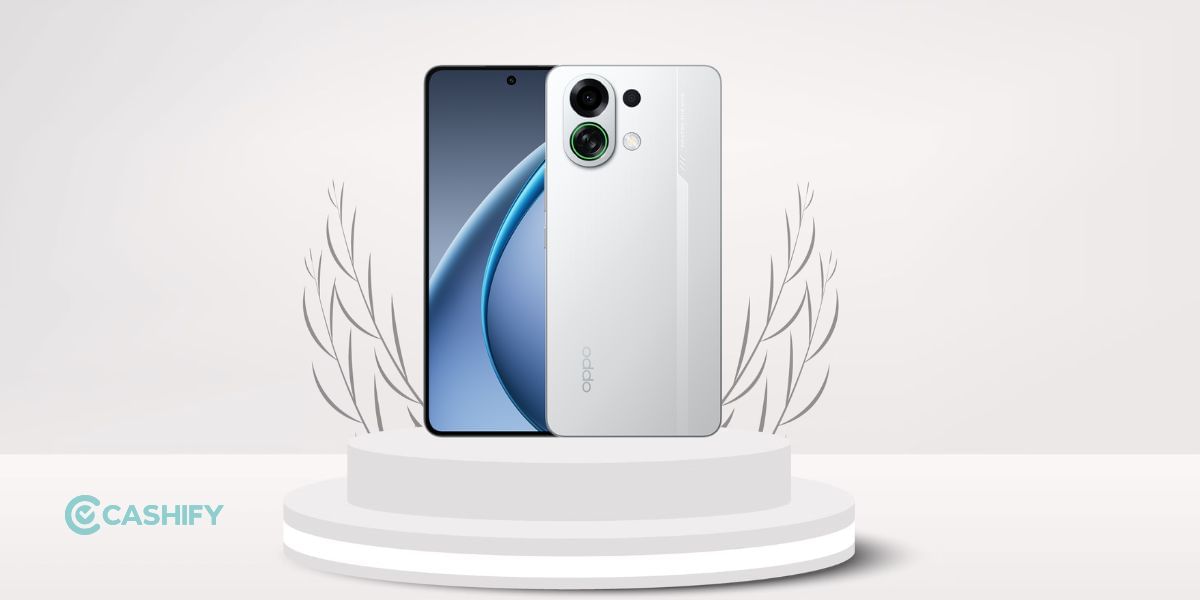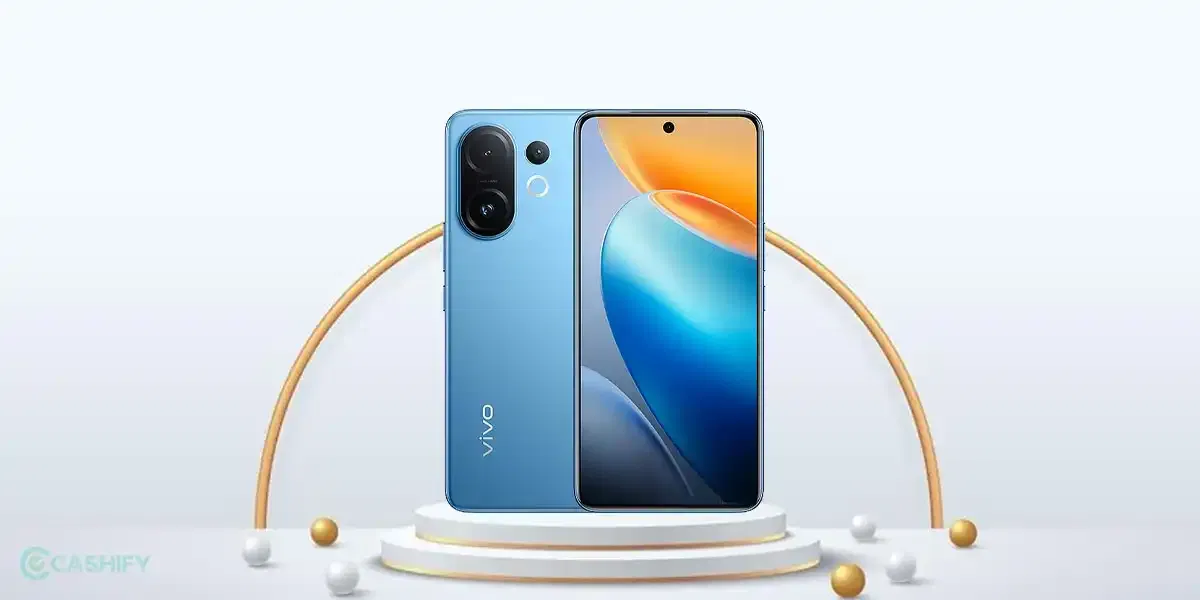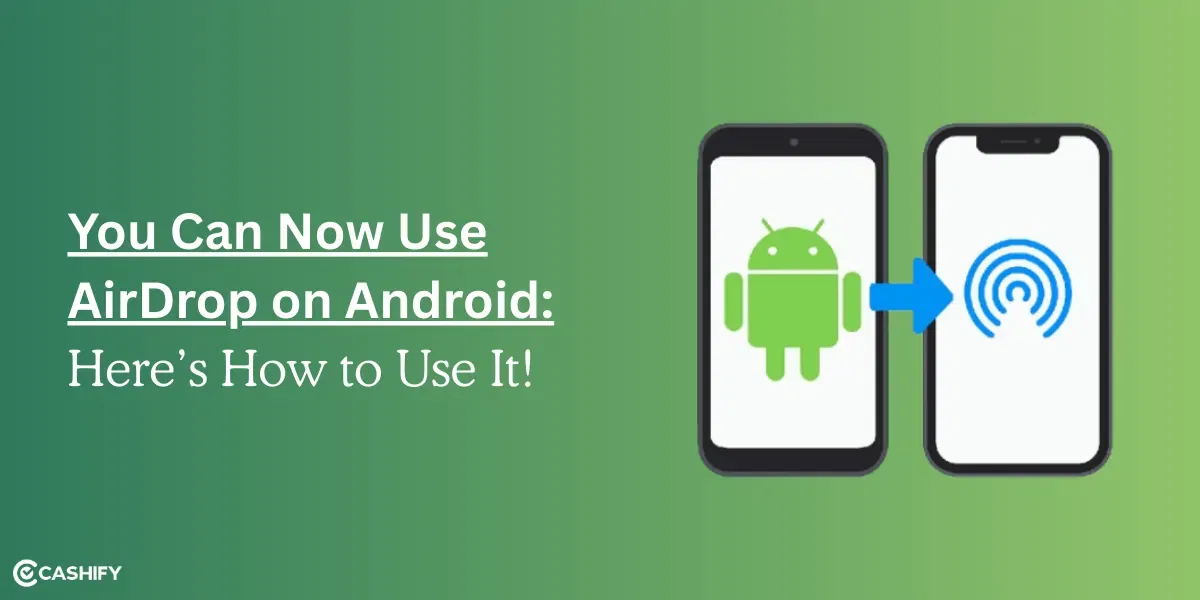Vivo X60 Review
Vivo X60 lineup is one of the latest and the most advertised smartphone series from Vivo when it comes to premium devices. It has some incredible photography capabilities and has partnered with Zeiss. Vivo X60 is the vanilla version of the X60 series and packs in some quality specifications is it a stealthy-looking powerful Snapdragon 870 5G SoC to OIS-clad 48MP primary snapper and more.
Also Read: Vivo X60 Pro Plus Quick Review
Well, here’s everything you need to know about the Vivo X60 in an all-expansive and highly detailed hands-on review.
Vivo X60 Price in India, Variants, Availability
Go for the majestic Midnight Black or the Shimmer Blue colourways with Vivo X60 starting at Rs 37,990/- price in India for its base variant with an 8GB+128GB configuration. Spent about Rs 4,000/- and you get its topmost 12GB+256GB variant at Rs 41,990/-. Offers such as 5% cashback on availing Flipkart Axis Bank CC, 10% off using iCICI Mastercard CC, and others are available. You get up to Rs 36,090/- off by availing of the exchange program on Flipkart.
Vivo X60 Specs at a glance
Before we talk in detail about the Vivo X60 let’s see what the on-paper specs look like?
- Display: 16.65cm (6.56″) AMOLED Display, 120 Hz refresh rate
- Processor: Qualcomm Snapdragon 870
- Storage: 8GB/128GB
- Software: Funtouch OS 11.1 (based on Android 11)
- Rear cameras: 48MP+13MP+13MP
- Front camera: 32MP
- Battery: 4300mAh, 33W flash charging
- Weight: 176g
- Dimensions: 159.6 x 75 x 7.4 mm
Vivo X60 Design and Build
No doubt Vivo phones are amazing when it comes to design and especially the X60 series. The vanilla shares its design DNA with other siblings. I had a Midnight Black variant in my hands that arrives with a Satin Finish as the company calls it. The back panel is almost matte which means it divulges from sticking any fingerprint marks and smudges to a great extent.
Vivo X60 is 7.39mm thick which makes it one of the thinnest phones. But hey, you will have to hold it firmly or risk dropping it because of its thin frame and a Satin Finish texture at the back that escalates slippery-ness. The back glass is frosted to achieve the said colour variants i.e. Midnight Black and Shimmer Blue.
Planning to upgrade? Sell Your Old Phone in 60 Seconds From Home
Talking about the camera setup, it has a giant X60 Pro-inspired camera bump with a dual-step setup where the cameras and the flash are on different protrusions above the back panel. Although it looks flamboyant, it adds wobbliness to the structure when you keep the phone face up against a hard surface. When it comes to the display, the bezels are thin. A tiny punch-hole at the middle of the top bezel is quite tiny that doesn’t distract you for good. The chin is considerably thin as well so that’s a relief.
Vivo X60 uses a Corning Gorilla Glass 6/Schott Xensation for protection on top while the rear has a Corning Gorilla Glass 6. This ensures that the phone remains protected against shocks and falls to some degree.
The left panel is bald as it doesn’t have anything on it. You get a power button with a slightly different texture and a volume rocker on the right. On the top, there’s a single secondary microphone while the primary mic is at the bottom. It shares the bottom panel with a USB-C port, a speaker grille, and a SIM card tray. That’s all.
Vivo X60 Display
Vivo X60 packs in a 6.56” display boasting a 1080×2376 pixel resolution with a 398 PPI density. The display supports HDR10+ and has a 120Hz high refresh rate. It comes with Corning Gorilla Glass 6 on top.
The punch-hole cut-out located at the centre of the top bezel is small and thus, doesn’t put any issue in your immersive viewing experience. The display itself is edge-to-edge with a 92.7% STB which is pretty huge and great for gaming and media consumption. Furthermore, you get 120Hz of refresh rate and 240Hz of the touch sampling rate. The HRR runs as default where you can either set it to 60Hz or 120Hz or let it dynamically change as per the requirements.
Also, irrespective of if you either set the refresh rate to Auto or 120Hz mode, the performance is the same. It is at 120Hz when scrolling and interacting on the screen such as within social media apps, UI elements, and so on. However, as long as you go for games and video playback apps, the refresh rate drops to 60Hz. In any case, the results on using 120Hz mode are impressive as it lets the display refresh 200% faster than smartphones with a standard refresh rate.
Broke Your Old Phone Screen?
– Affordable Display Replacement at Home
Moving on, the device supports HDR10+ so viewing HDR content on video platforms including YouTube is accessible. The Vivo X60 supports Widevine L1 DRM which means it can stream FHD content on OTT platforms namely Netflix and Amazon Prime (among others).
Moving on, the display is an OLED panel so you get refined colour accuracy and precision, blacks are excellently darker and whites are brighter. The colours on the display are radiant and pop up. The display lights up with a high brightness when on the auto-brightness mode in bright sunlight.
Vivo X60 Performance
The premium smartphone from Vivo packs in a Qualcomm Snapdragon 870 5G SoC built on a 7nm processor. It has a tri-cluster octa-core arrangement with a max frequency of 3.2GHz. It is paired with Adreno 650 GPU, 128GB and 256GB US 3.1 storage, and finally, 8GB and 12GB of RAM options.
For the uninitiated, the Snapdragon 870 5G is a souped-up version of last year’s Snapdragon 865 SoC and technically, lags by 10% in terms of performance on a single-core test when compared with Snapdragon 888 SoC. It goes without saying, the app can handle n number of apps. The company says more than 20 apps can be accessed at any given time by toggling between them with ease.
Also Read: iQOO 7 Full Review
Launching apps don’t break a sweat even if it is too heavy to load. The device gets a meaty 8/12GB RAM plus 3GB of RAM that can be borrowed from the storage using Vivo’s virtual RAM. Collectively, any graphics-intensive or CPU-drenching tasks can be completed without any hassle.
I played multiple games on Vivo X60 including the obvious choices for testing purposes aks BGI and Call of Duty. You can achieve 60fps on COD with the highest graphics available. Go for 53fps and peak at 60fps ion Genshin Impact, average 100fps and 120fps peak on Free Fire, and so on. Handling graphics and processing isn’t a hassle for the Adreno 650 embedded on the SoC so no matter what you throw at it, X60 will take it like a pro.
Vivo X60 Software
On the software front, you get a FuntouchOS 11.1 out-of-the-box. It is based on Android 11 and is one of the best custom UIs available in the market. It has several bloatware as the case with any other smartphone you pick up but the UI is minimalistic in many ways. Its elements aren’t in your face similar to MIUI. It has a tonne of features and in fact, it can be termed as an impeccable replacement if you don’t want a stock Android. Since it comes paired with Android 11, there’s no doubt it will get Android 12 as well and the Android 13 will likely drop too.
Also Read: Redmi 9A Review – Best Most Affordable Smartphone Right Now
Vivo X60 Camera
Vivo X60 has focused on the camera setup a lot. It comes with a massive 32MP module at the front with an f/2.5 aperture. On the other hand, the rear setup has a triple camera bump which houses a 48MP primary snapper (with OIS, PDAF, f/1.8 aperture), a 13MP telephoto snapper with 50mm lens, f/2.5 aperture, PDAF, 2x optical zoom; and a tertiary ultrawide module with a 13MP sensor with f/2.2 aperture and 120-degree field of view.
It’s uncanny how good the Vivo X60 is in terms of its camera performance. Irrespective of the lighting conditions, the camera setup nails it every time. Be it a daylight shot, indoor, or nighttime shot, nothing is off limit for Vivo X60.
First up, the primary camera on-board captures truly amazing shots. It retains a lot of details, colours are true to life and reproduction is excellent. The sensor uses Pixel Shift Ultra HD Imaging which is a term used to describe the movement of the sensor to capture each colour. This nullifies the need to guess colours and thus, the shots have excellent colour reproduction as mentioned above.
Check Out: What is Gcam? How to install Gcam on any Android smartphone?
Use its Portrait mode and it does a great job in edge detection and isolation. The secondary telephoto sensor doubles as a depth sensor to collect depth data and imposes it to the shot to create impeccable portrait shots with brilliant background blue. There’s a Super Macro mode on-board that lets you capture shots of tiny objects at a close distance so much so that the fibres of clothes are extremely good.
Both primary and ultra-wide-angle sensors have a night mode that enhances details and brightens the shots for impressive nighttime photography. In fact, the shots are amazing as the sensor doesn’t overcompensate but rather captures accurate details maintaining a lower degree of noise and a higher degree of details retention.
Daytime photography on the ultrawide and telephoto sensor are on-point with the price tag. Note that you would find that the colours captured by either three of the sensor aren’t perfectly consistent. The ultrawide shots deal with softer edges.
Telephoto cam lets you go for 2x and beyond. 2x is optical which anything above that goes for digital zoom of up to 20x. As you keep zooming forward, the detail retention and overall quality of the shots deteriorates.
Moving on, we have a 32MP selfie shooter which is a dropdown from 44MP on the 4G variant of Reno6. It takes awesome photos in the daytime and since the sensor is extremely huge, the details retention is beyond average and the sensor manages to keep white balance in the tab. Again, you can go for portrait shots using the front camera that lets you capture stellar results. The bokeh effect can be adjusted and so is the beauty effect on the device.
The primary snapper at the rear uses a 5-axis OIS that ensures video recording is extremely smooth. You can go upwards of 4K@60fps with. You can go for 1080p@30/60fps with gyro-EIS. The front, on the other hand, is capped at 1080p@30fps.
Vivo X60 Battery
At 4,300 mAh, the battery size is average by Android standards. However, it is 100 mAh more than what Vivo X60 Pro arrives with. With this battery pack, you can easily get more than 6 hours of screen-on-time or say a day’s worth of battery life on a mix of moderate to heavy usage. Activating power-saving and idling takes the battery half day on the 2nd day after charging which makes a lot of sense given the fact that not everyone likes plugging their phones to charge every day.
Read More: Top 10 Tips To Keep Your Smartphone Battery Healthy
When it comes to charging speed, it is at 33W which is average given that Realme GT 5G has 65W fast charging tech and has a similar price tag. It will still take you about an hour or 65 to 70 minutes to fill up the battery pack. It isn’t the fastest, I know, but it is worth a try given that many other specifications are up to the mark.
Vivo X60 Audio, Connectivity, Biometrics
Audio-wise, Vivo X60 has a loud bottom-firing loudspeaker and yes, that’s just one speaker. It should’ve arrived with a stereo speaker setup given its price point but hey, when has it happen that OEMs provide everything on a smartphone that has Pro and Pro+ variants as siblings. Overall, the single speaker is loud enough.
It’s a premium smartphone so you get a tonne of connectivity features with it. Be it Bluetooth v5.1 with aptX HD, LE, and A2DP or the Wi-Fi ac dual-band, GPS that covers a wide range of navigation systems including NavIC to NFC, USB Type-C 2.0 port among others. There’s no 3.5mm headphone jack which is sad but true.
Check Out: What is Carrier Aggregation? Why is it so important?
Vivo X60 supports 4G (of course) and 5G as well. It has n77 and n78 bands in both SA and NSA 5G networks in India although the 5G infrastructure is yet to be built. It is likely to arrive in the coming years but for now, you will be restricted to 4G networks where your X60 supports various bands with LTE-A. I have been using X60 paired with Vi 4G and Jio 4G and both work fine even when you are travelling in a lift or if you are in a basement. I didn’t notice any call quality loss in many unusual circumstances although it is subjective based on the network reception and strength in your locality.
When it comes to authentication via biometrics, you get the same flavour as with many mid-range and flagship phones. You have an under-the-display optical fingerprint scanner that is lightning fast and unlocks the phone without a fraction of delay. On the other hand, you have facial recognition or Face Unlock that uses the front camera to authenticate the user based on 2D software. It is snappy as well although I have a personal inclination towards FPS than Face Unlock, you are free to choose your mode.
Vivo X60 Pros & Cons
Pros
- AMOLED display with 120Hz refresh rate
- The first device to feature Exynos 1080 chipset
- 12GBRAM + 256GB internal storage
- Under-display fingerprint sensor
- 5G connectivity
Cons
- No wireless charging
- No dust and water protection
Specification-wise, X60 is a powerful smartphone with a lot of beef to compete against many flagship smartphones be it the Poco F3 GT, Mi 11X or Realme GT 5G among others. Vivo X60 shines bright with its powerful chipset, a 120Hz AMOLED panel, a Zeiss triple camera setup, and more. However, it lacks in terms of charging speed, it could have gone for a QHD display instead of an FHD+ and it could have gone for a stereo speaker setup. There’s no wireless charging either.
Overall, the phone offers an impressive prospect at a price tag starting at just Rs 37,990/-, however, it has too many rivals to compete against. Let us know which smartphone you would pick against Vivo X60.


